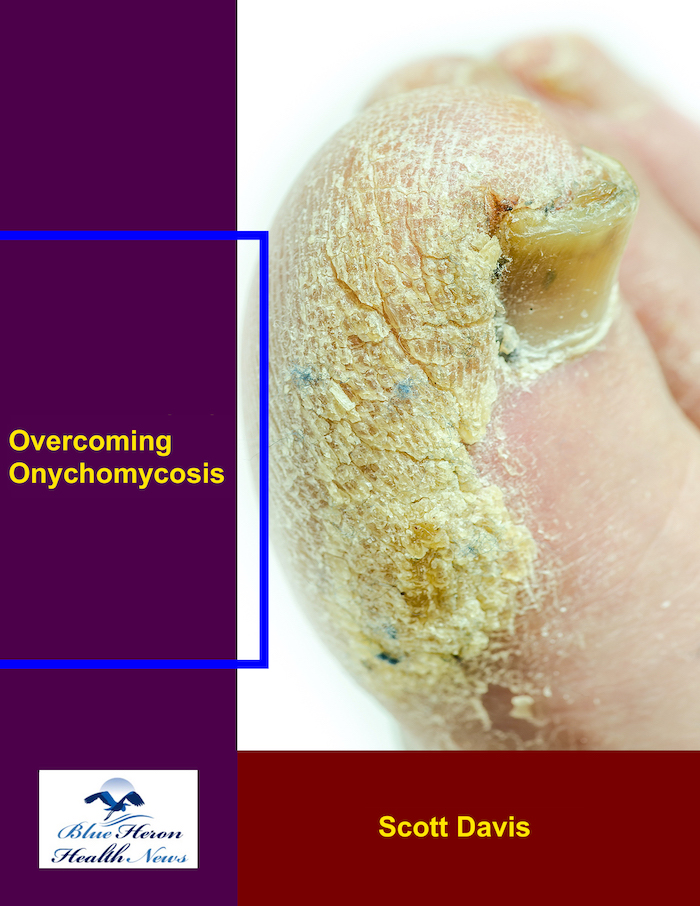
Overcoming Onychomycosis™ By Scott Davis If you want a natural and proven solution for onychomycosis, you should not look beyond Overcoming Onychomycosis. It is easy to follow and safe as well. You will not have to take drugs and chemicals. Yes, you will have to choose healthy foods to treat your nail fungus. You can notice the difference within a few days. Gradually, your nails will look and feel different. Also, you will not experience the same condition again!
What is the connection between onychomycosis and secondary bacterial infections?
Onychomycosis (fungal nail infection) can create a situation conducive to secondary bacterial infections, particularly in vulnerable groups. Here’s how the connection goes:
???? Key Connection:
Onychomycosis damages the nail as well as the surrounding skin, compromising the natural barrier that would otherwise prevent bacteria from entering. This creates an entry point for bacterial pathogens to enter and infect.
???? How Onychomycosis Predisposes to Secondary Bacterial Infections:
Damaged Nail Structure
Fungal infections thicken, separate, or lift the nail, creating cracks and crevices.
These create spaces that trap moisture and debris that become a breeding ground for bacteria such as Staphylococcus aureus or Pseudomonas aeruginosa.
Breaks in the Skin
The infection can extend to the nail bed or surrounding skin (paronychia), causing skin breakdown or minor wounds.
Open skin allows entry for bacteria to invade deeper layers, causing cellulitis or abscesses.
Chronic Inflammation and Weakened Immunity
Chronic fungal infections cause inflammation, weakening local immunity.
In diabetic or immunocompromised patients, this also increases the risk of rapidly spreading bacterial infections.
Poor Foot Circulation and Hygiene
Patients with poor foot circulation (e.g., from diabetes or peripheral vascular disease) may be less able to fight off secondary infections.
If deformed or ingrown, the nail may cause mechanical trauma easily infected.
???? Common Bacteria Involved:
Staphylococcus aureus – cellulitis, boils, or abscesses.
Pseudomonas aeruginosa – may cause green nail syndrome (nail turns green-black).
Streptococcus species – cellulitis and erysipelas around the nail.
???? Symptoms of Secondary Bacterial Infection:
Pain, swelling, or redness around the nail that is getting worse
Pus or discharge
Foul smell
Fever or systemic symptoms if serious
????⚕️ Treatment:
Treat the fungal infection: Oral antifungals (e.g., terbinafine) or topical.
Antibiotics: Oral or topical antibiotics if infected by bacteria.
Wound care: Especially important for individuals with diabetes or circulatory issues.
Prevention: Maintain good hygiene, keep feet dry, trim nails carefully, and treat fungal infections promptly.
Would you like some guidelines on preventing such infections or self-managing onychomycosis at home?
Onychomycosis, a fungal infection of the toenail, can cause swelling of the toe in a process that combines inflammation, secondary infection, and pressure as a result of changes in the nail. This is how:
1. Inflammatory Response to Fungal Infection
The body reacts to the fungal invader by initiating an immune response that includes inflammation in the surrounding soft tissue and skin.
This immune response may cause redness, heat, and swelling of the toe, especially the nail fold (the skin covering the base and sides of the nail).
2. Thickened, Deformed Nail Causes Pressure
As the fungus further spreads, the nail may thicken, become brittle, or deformed.
The alteration in shape and thickness may cause mechanical pressure on the nail bed and surrounding tissues, particularly with snug-fitting shoes.
This greater pressure can result in localized pain and swelling, especially with weight bearing or ambulation.
3. Secondary Bacterial Infection
The damaged nail and adjacent skin may offer a portal of entry for bacteria, resulting in a secondary infection (e.g., paronychia or cellulitis).
This can result in a significant increase in swelling, redness, and pain and may be accompanied by drainage or pus.
In diabetics or those with impaired circulation, this danger is especially significant and may require immediate treatment.
4. Ingrown Toenail Complication
Onychomycosis can have your nail shaped irregularly, increasing the chances of developing an ingrown toenail, where the nail edge pierces the surrounding skin.
This can lead to inflammation and swelling in the area, especially at the side of the toe.
When to Seek Medical Help:
Swelling that is getting worse, is painful, or is accompanied by red streaks, fever, or pus may indicate a more serious infection and should be evaluated by a health care professional.
Diabetics or individuals with poor circulation should not ignore even minor swelling of the toes.
Would you like home remedy suggestions for onychomycosis or prescription medication options?
Overcoming Onychomycosis™ By Scott Davis If you want a natural and proven solution for onychomycosis, you should not look beyond Overcoming Onychomycosis. It is easy to follow and safe as well. You will not have to take drugs and chemicals. Yes, you will have to choose healthy foods to treat your nail fungus. You can notice the difference within a few days. Gradually, your nails will look and feel different. Also, you will not experience